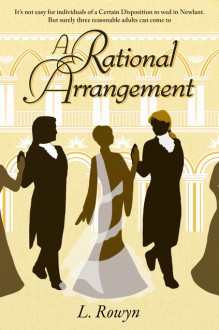
I thank Christina Boyd for sending me an ARC copy of this book that I freely chose to review and for offering me to the opportunity to join the blog tour for its launch.
I have read and reviewed one of the Austen based collections Christina Boyd has edited in the past (Dangerous to Know: Jane Austen’s Rakes & Gentlemen Rogues, check that review here), and when she told me what she was working on, I did not hesitate. I have met many talented writers through her collection and the books she has edited and have to warn any readers that you are likely to end up with a long list of authors added to your favourites if you keep on reading.
I am sure no Austen reader would think that, but some people not so well versed in her work sometimes think that her novels are only about silly girls of the Regency period, normally of good families, flirting and forever plotting to marry a rich and attractive man, with nothing of interest in their heads other than attending parties and fashionable balls, and not a hint of independent thought or opinion. Nothing further from the truth. The title of the collection highlights the status of Jane Austen’s female characters. There are nice women, some cruel ones, vain, prejudiced, stubborn, naïve, impulsive, but they are not the playthings of men. They work hard to prove they are “rational creatures” and they try, within the options open to them at the time, to take charge of their lives and their own destinies.
In the foreword, Devoney Looser writes:
In its pages, the best of today’s Austen-inspired authors use their significant creative powers to explore new angles of love and loss, captivity and emancipation. These stories reimagine both, beloved female characters, like Pride and Prejudice’s Elizabeth Bennet, and loathed ones, such as Persuasion’s Penelope Clay. The results are comical, disturbing, and moving.
I could not have said it better. While when I reviewed Dangerous to Know I said anybody could enjoy the stories but connoisseurs of Austen would likely delight in them, in this case, I think this is a book for Austen fans, and those particularly interested in feminism and in the early supporters of the education of women. Mary Wollstonecraft’s A Vindication of the Rights of Woman is mentioned in the foreword and also makes its appearance in some of the stories, and it clearly informs the readings the authors make of the characters and the novels they pay homage to. In a matter of fact, the book could also have been called A Vindication of Austen’s Women.
While some of the contributions are short stories in their own right, although centred on one of Austen’s female characters, some are vignettes closely linked to one of her novels, showing the background to some events in the story, or exploring the reasons for the decisions taken by some of the female characters that might have surprised us when we have read the novels, particularly so, perhaps, due to our modern sensibilities. Each story is introduced by a quotation from the novel in question that helps us get into the right frame of mind.
The catalogue of stories and characters is long and inclusive. We have: “Self-Composed” (by Christina Morland) about Elinor Dashwood, “Every Past Affliction” (by Nicole Clarkston) about Marianne Dashwood, “Happiness in Marriage” (by Amy D’Orazio) about Elizabeth Bennet (one of the most famous and well-known heroines in the Austen canon and I think most readers will easily identify with the character and her plight), “Charlotte’s Comfort” (by Joana Starnes) about Charlotte Lucas (I will confess I’d always wondered about Charlotte’s decision to marry the horrendous Mr. Collins. I enjoyed this version of events and it makes perfect sense), “Knightley Discourses” (by Anngela Schroeder) about Emma Woodhouse (it was a pleasure to catch up with Emma again, a happily married Emma, here), “The Simple Things” (by J. Marie Croft) about Hetty Bates (perhaps because I’ve never been married, I am always drawn towards characters who remain single, and I found this episode particularly touching), “In Good Hands” (by Caitlin Williams) about Harriet Smith (it was good to see Harriet get her own voice and not only be Emma’s plaything), “The Meaning of Wife” (by Brooke West) about Fanny Price (I liked this rendering of Fanny Price as she gets enlightened thanks to Wollstonecraft’s Vindication), “What Strange Creatures” (by Jenetta James) about Mary Crawford (which introduces a touch of mystery), “An Unnatural Beginning” (by Elizabeth Adams) about Anne Elliot (another one I found particularly touching), “Where the Sky Touches the Sea” (by Karalynne Mackrory) about Sophia Croft (this is not a character I was very familiar with but I loved her relationship with her husband, her self-sufficiency, and the realistic depiction of grief), “The Art of Pleasing” (by Lona Manning) about Penelope Clay (as a lover of books about cons and conmen, I could not help but enjoy this fun story full of twists and fantastically deceitful characters), “Louisa by the Sea” (by Beau North) about Louisa Musgrove, “The Strength of Their Attachment” (by Sophia Rose) about Catherine Morland, “A Nominal Mistress” (by Karen M. Cox) about Eleanor Tilney (a fun story with its sad moments, and a good example of the type of situations women could find themselves in at the time), and “The Edification of Lady Susan” (by Jessie Lewis) about Lady Susan Vernon (an epistolary story that I thoroughly enjoyed, and another one recommended to people who love deceit and con games).
The writing styles vary between the stories, but there are no actualisations or reinventions. The stories are all set within the Regency period, and the authors observe the mores and customs of the period, seamlessly weaving their vignettes and stories that would be perfectly at eas within the pages of the Austen novels they are inspired by. The characters might push the boundaries of gender and social classes but never by behaving in anachronistic ways, and if anything, reading this book will make us more aware of what life was like for women of different ages and different social situations in that historical period. What we get are close insights into the thoughts and feelings of these women, many of whom were only talked about but never given their own voices in the original novels. It is amazing how well the selection works, as sometimes we can read about the same characters from different perspectives (the protagonist in one of the stories might be a secondary character in another one, and the heroine in one of the stories might be a villain in the next), but they all fit together and help create a multifaceted portrait of these women and of what it meant to be a woman of a certain class in the Regency period.
I have said before that I feel this collection will suit better readers who are familiar with Austen’s universe, but, to be fair, I have enjoyed both, the stories centred on novels I knew quite well, and those based on characters I was not very familiar with, so I would not discourage people who enjoy Regency period novels and have read some Austen, but are not experts, from reading this book. By the time I finished the book, I admired, even more, the genius of Austen and had decided to become better acquainted with all of her novels. Oh, and of course, determined also to keep sharing the collections and books by this talented group of writers.
In summary, I recommend this book to anybody who loves Austen and has always felt curious about her female characters, protagonists and supporting players alike, and wished to have a private conversation with them, or at least be privy to the thoughts they kept under wraps. If you want to know who these women are and to see what it must have been like to try to be a woman and a rational creature with your own ideas in such historical era, I recommend this collection. As a bonus, you’ll discover a selection of great authors, and you’ll feel compelled to go back and read all of Austen’s novels. You’ve got nothing to lose other than a bit (or a lot) of sleep!


 Log in with Facebook
Log in with Facebook 








